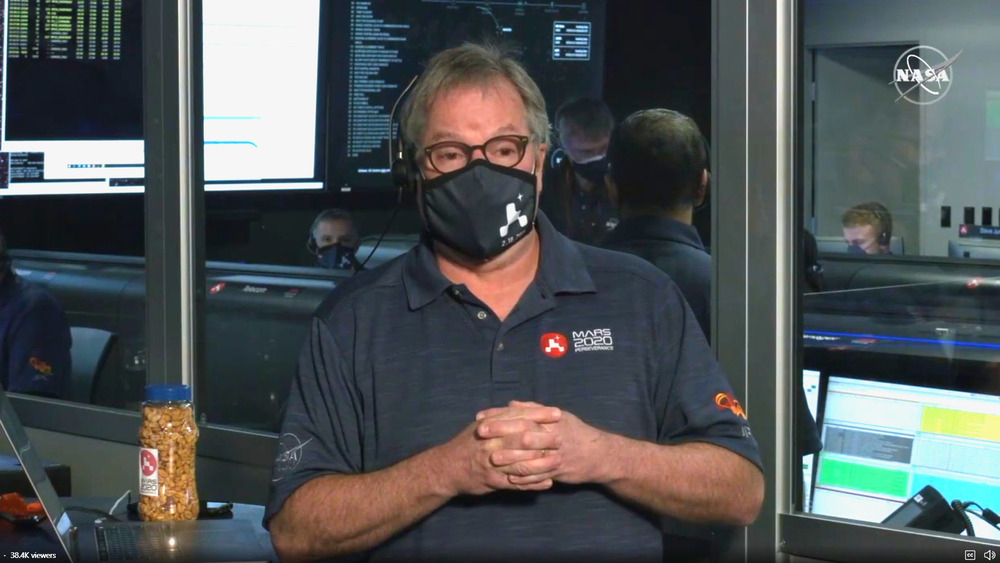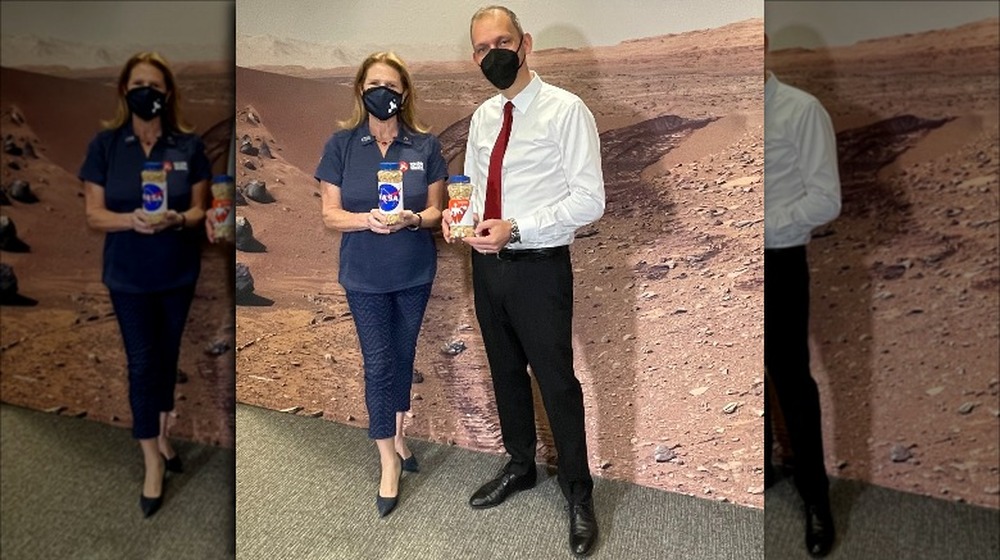The Real Reason Peanuts Are So Important To NASA
Why were NASA scientists posing for photographs with peanuts on the day the Perseverance rover landed on Mars? What might have looked more than a little random to some people actually has a long and lucky history with America's space agency.
NASA administrator Thomas Zurbuchen posted a photo to his Twitter account of him and a colleague posing with a Martian landscape as a backdrop. "Director of Planetary Science Lori Glaze and I have our ... lucky peanuts at hand," Zurbuchen wrote in the tweet. "Just under three hours until @NASAPersevere's landing! #CountdownToMars." Sure enough, just under three hours later, Perseverance landed safe and sound on the dusty red surface of the fourth planet from the sun, some 130 million miles from Earth (via USGS). The peanuts had done their job.
NASA mission leaders first broke out the peanuts during the Ranger 7 mission in 1964 (via Discover). After six failed Ranger missions – attempts to get a close-up look at the moon's surface to prepare for eventual astronaut missions – the stakes were high and nerves were on edge. Engineer Dick Wallace handed out peanuts during Ranger 7, so mission staff would have something to chew on or fidget with as a distraction.
Ranger 7 was a success and paved the way for the famous Apollo moon landings. "I thought passing out peanuts might take some of the edge off the anxiety in the mission operations room," Wallace said (via NASA). "The rest is history."
NASA kept the peanut tradition going in its latest Mars mission
In the 50-plus years since that first peanut-fueled mission, NASA's technology and know-how have gotten much better. The missions have gotten riskier, too. "Only about 40 percent of the missions ever sent to Mars – by any space agency – have been successful" so far, according to NASA Mars. Hundreds of things have to go exactly right. None of them have anything to do with whether peanuts are on hand at mission control. But they couldn't hurt.
Will NASA admit the peanuts are mere superstition? The guy who first brought the peanuts to NASA in 1964 didn't want to go that far. "I hope not," Wallace said (via NASA). "Not in this bastion of logic and reason."
If peanuts are so lucky (er, traditional), then maybe they should accompany astronauts when and if they embark on the first human mission to Mars. That might be OK, as long as they're unsalted – NASA has banned salt and other spices in their usual, granular form because they can make a big mess in zero gravity (via The Franklin Institute). But if astronauts are going to get enough food on a mission that will take months or years to complete, they'll need to grow their own. Experiments involving growing food on the International Space Station have included lettuce, cabbage, mustard, kale, and wheat, according to NASA. Astronauts have even gotten to eat some of what they've grown. So far, however, peanuts haven't made it on the space menu.

